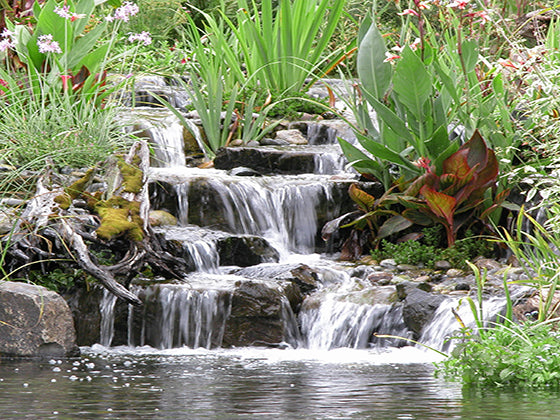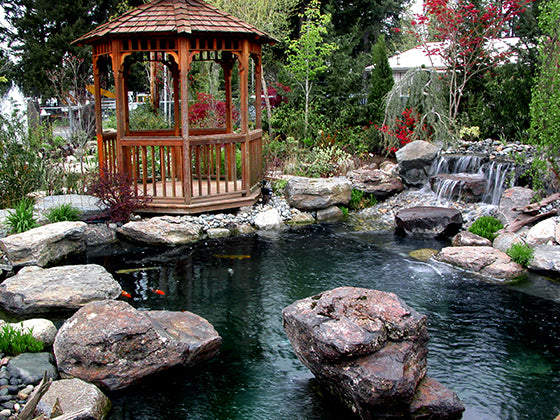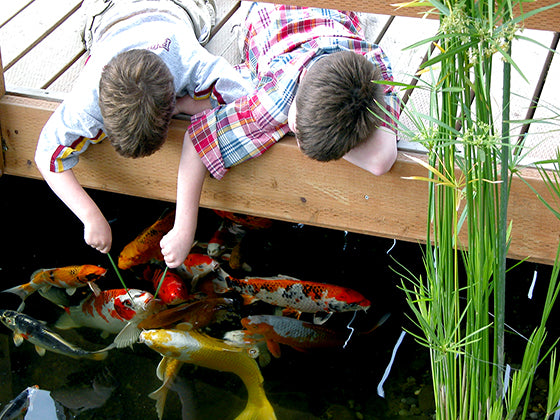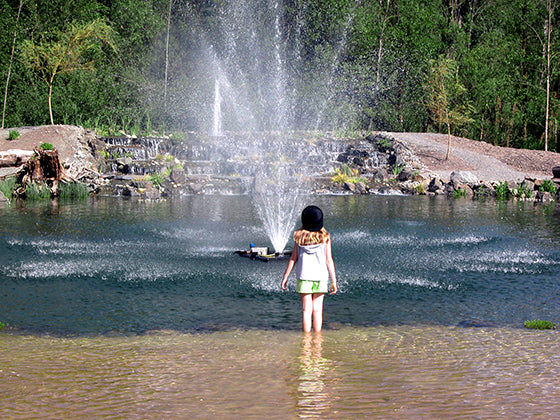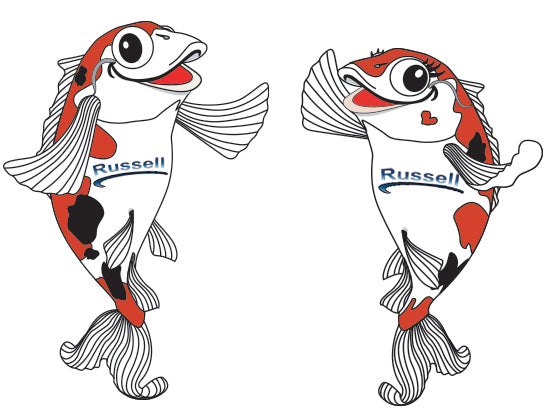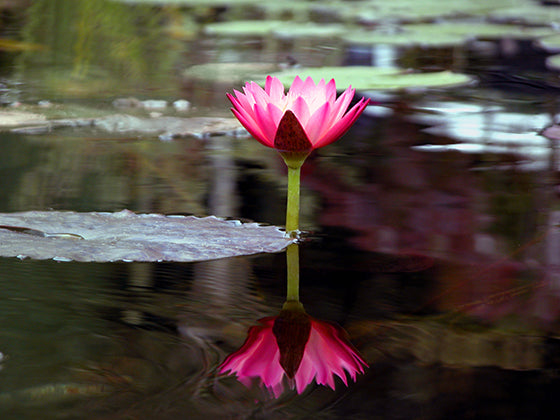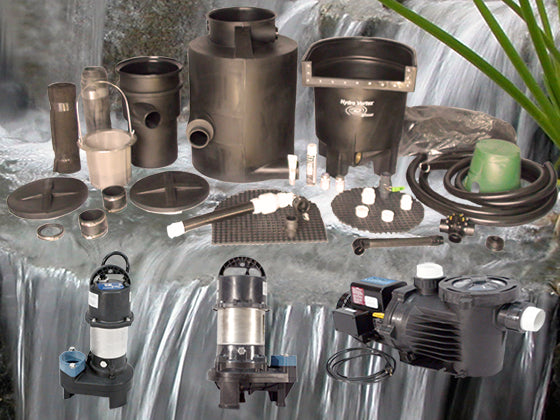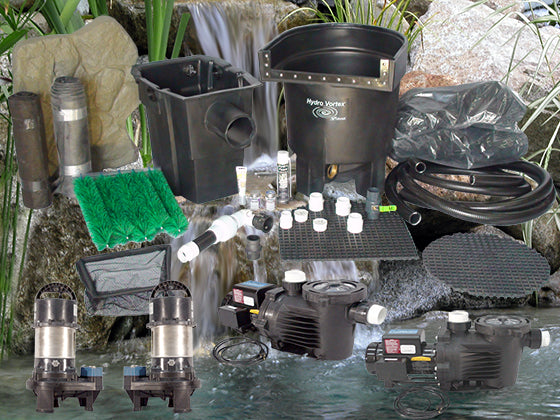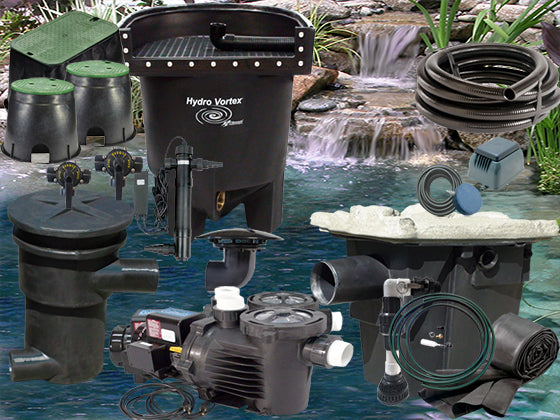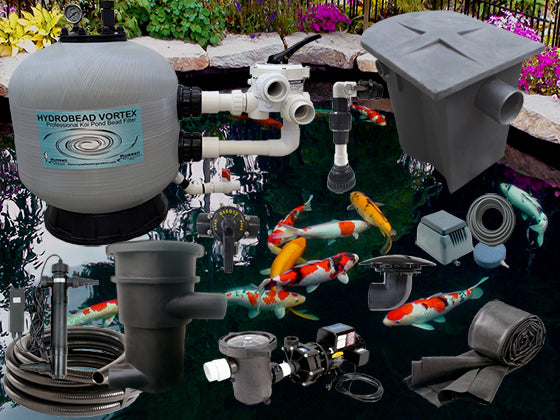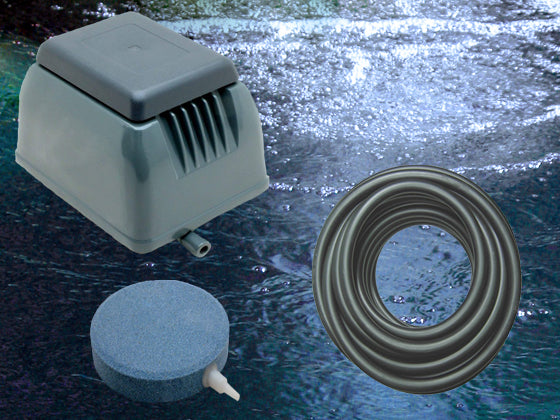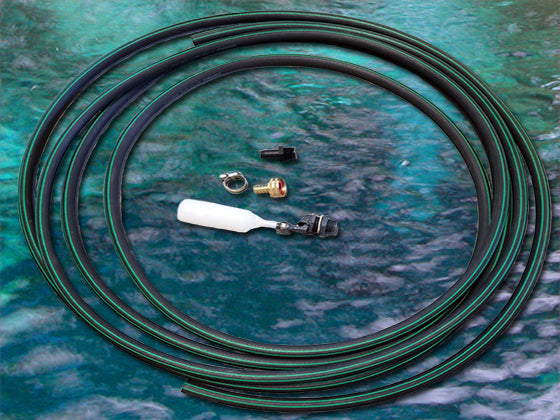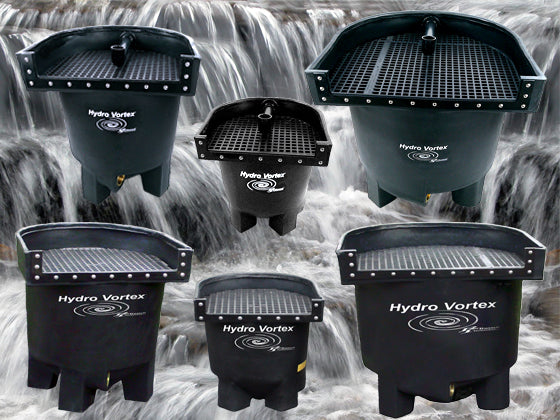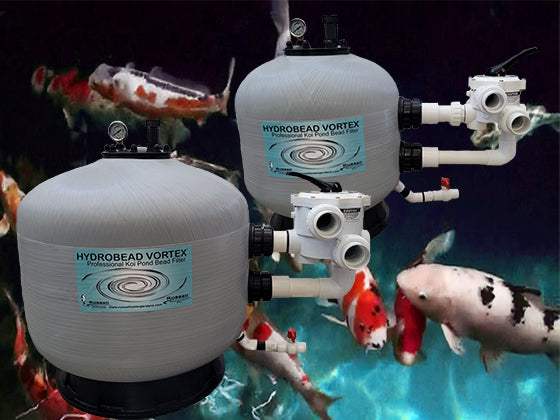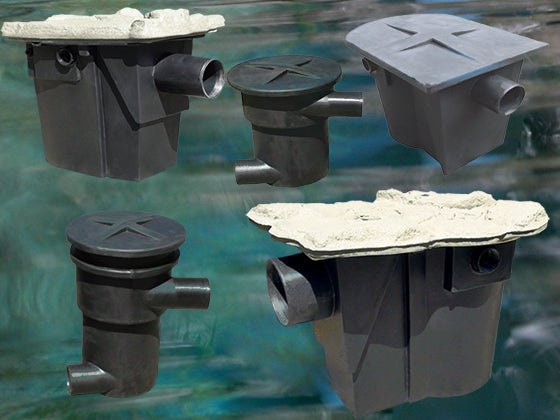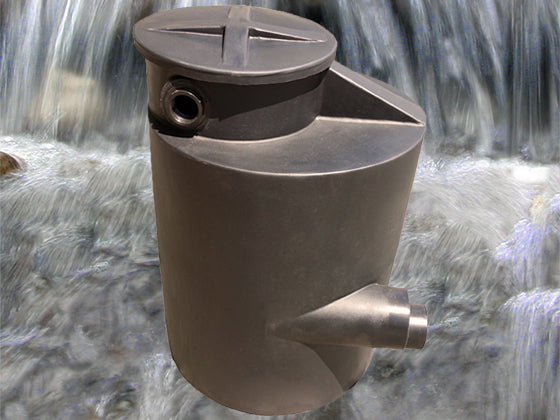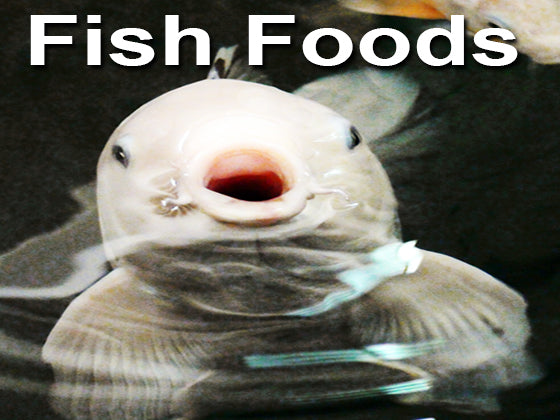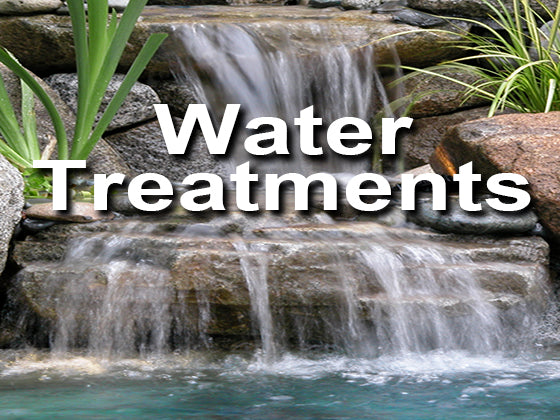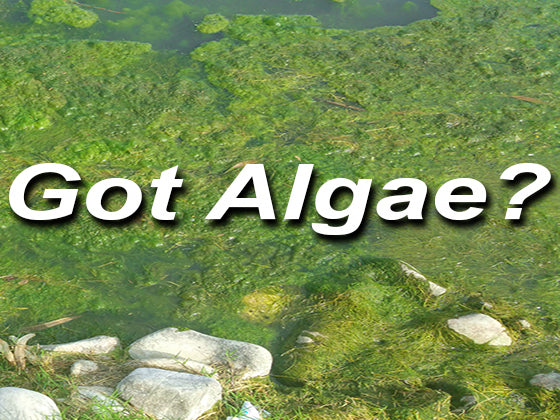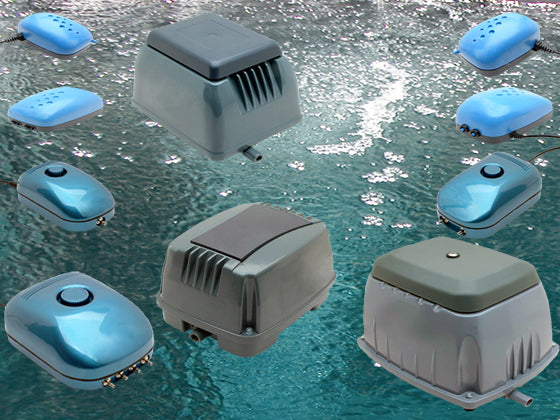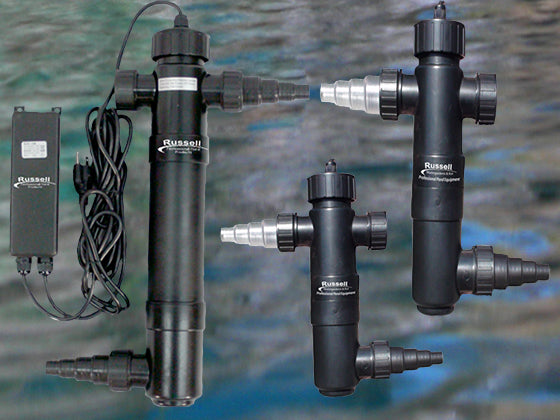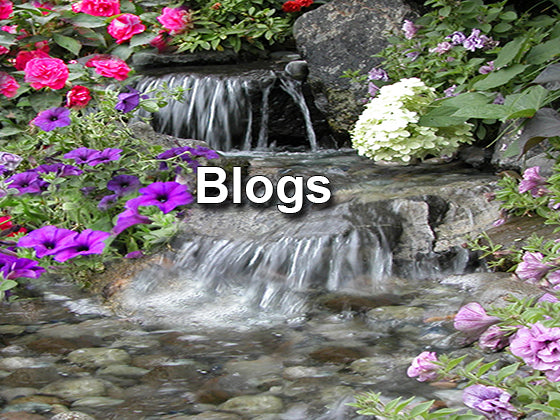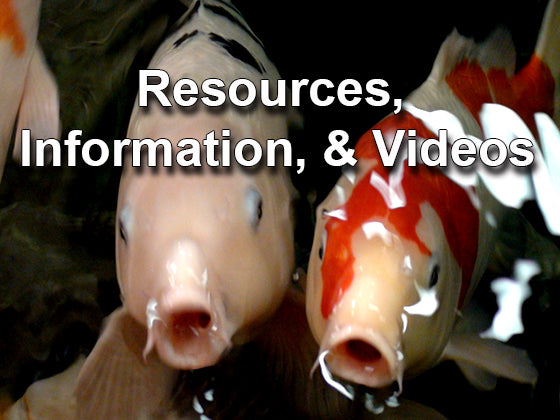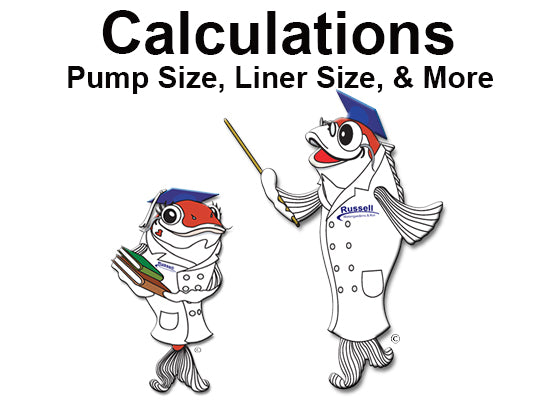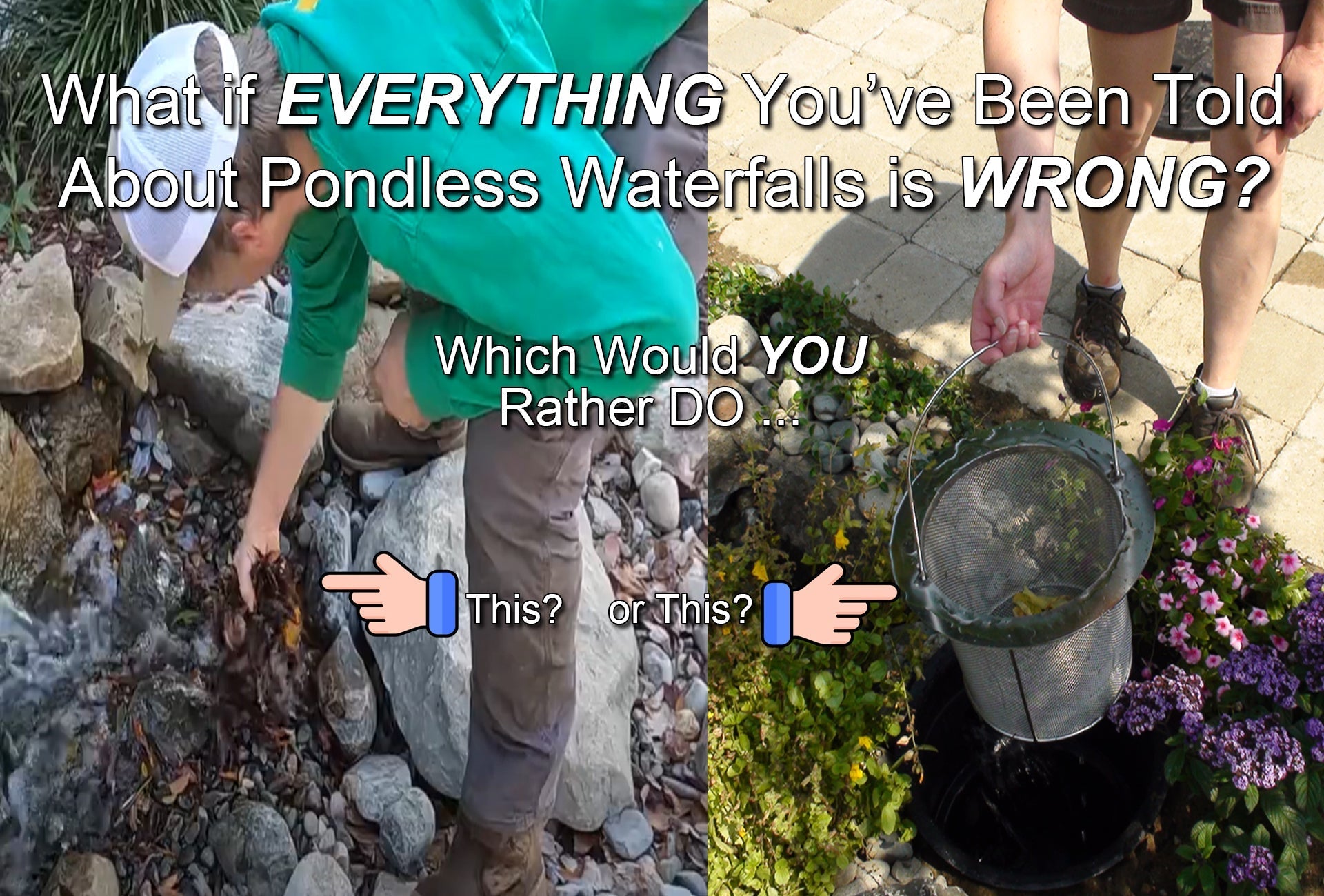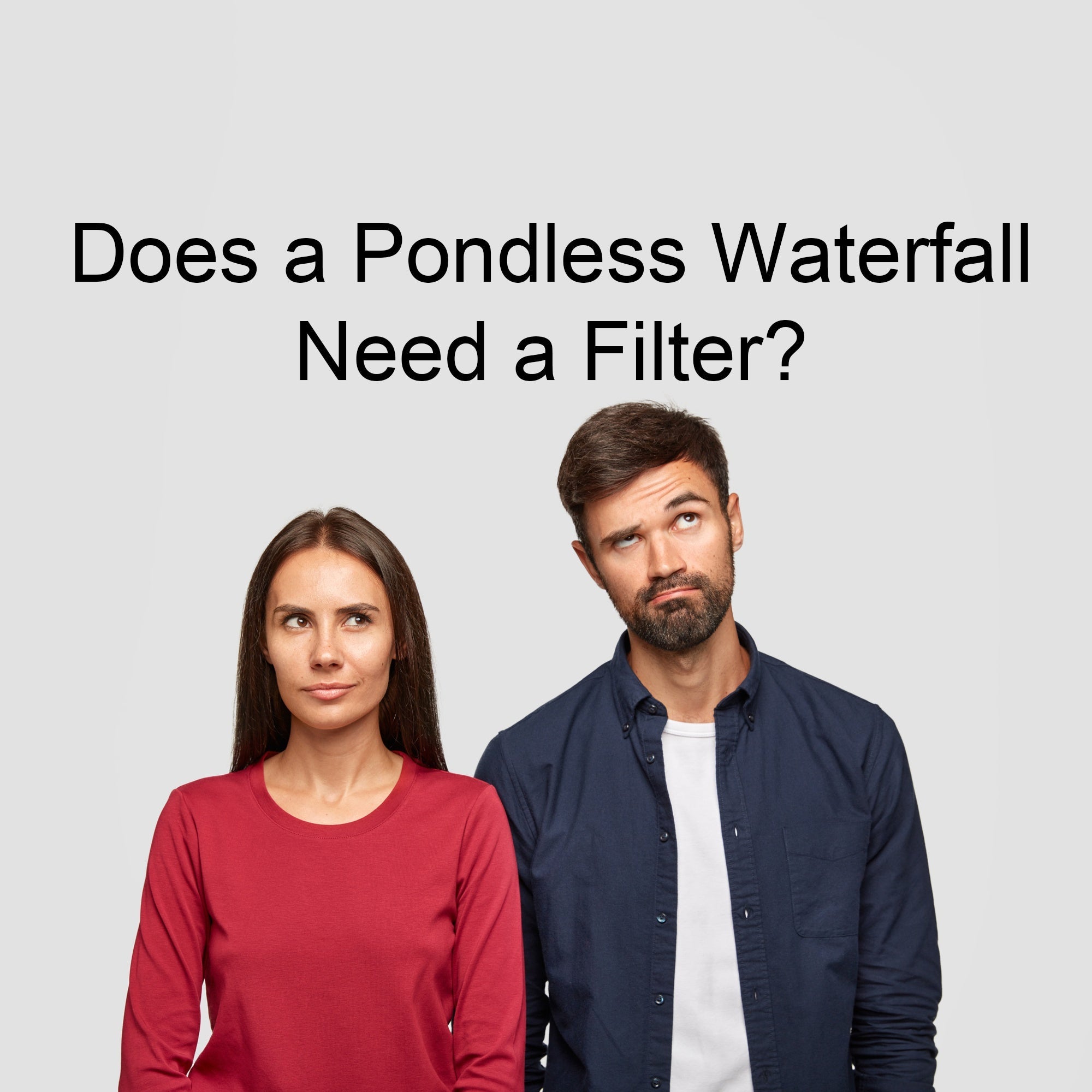What is a Water Garden Pond?
Pond Kits
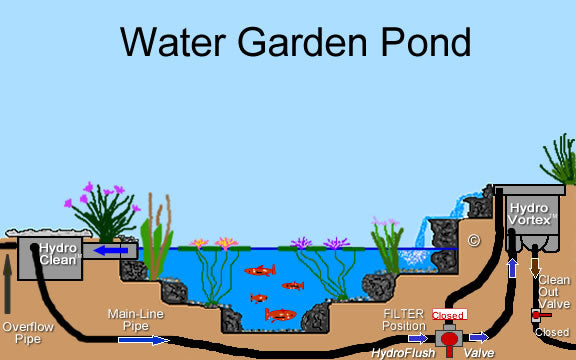
The Beauty of a Water Garden Pond
A Water Garden Pond is a pond built for the garden. Unlike a koi pond, a water garden pond is designed and built with water plants, rocks, boulders, gravel, and waterfalls. When heavily planted with aquatic plants, and placed within a heavily planted landscape, a Water Garden Pond can have the appearance of "always being there", as if Mother Nature herself built it.
A Water Garden Pond contains fish, usually goldfish or similar category pond fish, but small Koi can be raised in a Water Garden Pond. (Koi tend to "outgrow" Water Garden Ponds rather quickly.) The pond is also designed with multiple water plant shelves of varying depths. The first shelf, called the "Marginal Shelf", is usually 2"-8" deep to accommodate bog and marginal water plants.
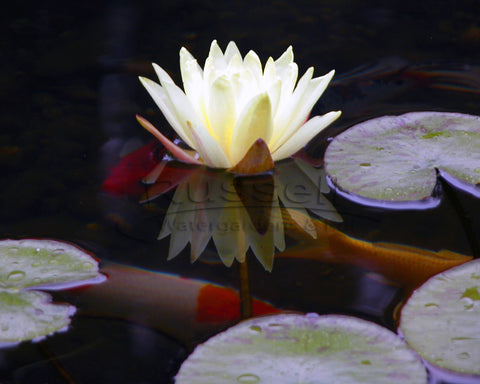
The second shelf, known as the "Lily Shelf", is typical 10"-16" deep to accommodate most water lilies. The next shelf is simply referred to as the "Deep Area". In Water Garden Ponds, the "Deep Area" is usually only 18"-24" deep. The "Deep Area" is usually a small percentage of the overall pond's total size.
The relatively "shallow depth", and small "Deep Area" of a Water Garden Pond, as compared to Koi ponds and Hybrid Ponds™, make them quicker and easier to install, they don't typically require permits to build, and they are the "safest" of the pond types for children and pets.
The water plant shelves of a Water Garden Pond serve two purposes: The first is to accommodate aquatic plants, the second is to act as "stairs" to easily walk into and out of the pond. Having a maximum depth of just 24", children taller than 24" can simply "stand-up" in the pond and walk out of the "stairs" if they accidentally fall into the pond. The same holds true for pets.

A Water Garden Pond is easier to maintain than a lawn, but it is the most difficult of the all pond styles to maintain - mainly because of the gravel on the horizontal shelves.
Russell Watergardens has designed the HydroClean™ pond skimmers to remove most of the large debris that falls into the pond (leaves, and etc.), and the Hydro Vortex™ filter is designed for easy backwashing of trapped debris, sediment, and detritus - but the gravel itself traps debris that doesn't find its way to either the HydroClean™ Pond Skimmer or the Hydro Vortex™ Waterfall Filter.
Cleaning the pea gravel inside a Water Garden Pond requires a few steps. The gravel needs to be kept free of "sunken debris" with a long net or extension tongs. Secondly, the pea gravel should be "fluffed" with water pressure to dislodge any trapped debris.

This is easily done by attaching 3/4" PVC pipe to a garden hose - and with a nozzle on the end of the PVC pipe, simply spray tap water into the gravel to "fluff" it up and release any trapped debris. Use a net to catch and remove any larger debris. The water will temporarily "cloud up". To make this easier, a pond vacuum with a suction intake screen is used.
The next step is to clear the water with HydroFloc™ Water Clarifier. When applied to the pond at the waterfalls, HydroFloc™ will start to "clump" the cloudy water together for capture in the HydroClean™ Pond Skimmer Brushes and the Hydro Vortex™.
After 24 hours, simply rinse the HydroClean™ Pond Skimmer brushes and perform a backwash on the Hydro Vortex™ filter. The pond, gravel, skimmer,and filter are all now cleaned. This should be done at least every 30 days to avoid a possible harmful buildup of organic debris in the gravel.
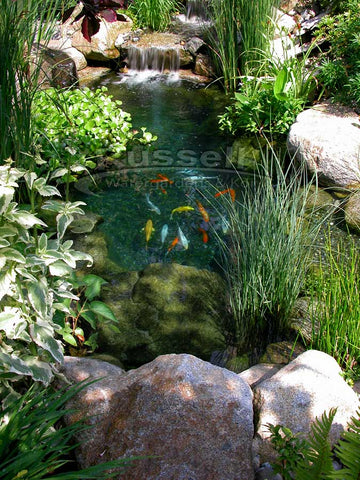
Why is pea gravel used instead of river rock?
Pea gravel is used for a couple of reasons. First, the pea gravel hides the rubber liner from view for a more "natural" look than "bare liner". Secondly, it is the planting medium for the aquatic plants. In Water Garden Ponds, all the aquatic plants are planted directly into the pea gravel - no extra soil, and no plant pots or baskets.
Also, pea gravel has a slightly higher SSA (Specific Surface Area) for biofilm growth than bare liner. This added SSA helps reduce ammonia levels in the pond.
3/8" - 1/2" smooth pea gravel should be used instead of the commonly used 2" - 8" river rock simply for ease of cleaning purposes. The "gaps" between the individual river rocks are much larger than the "gaps" between the individual pea gravel rocks.
The larger the "gap" between the individual rocks, the more debris that gets trapped. More trapped debris means "more cleaning". Russell Watergardens & Koi is committed to helping you create the Easiest to Clean Water Garden Pond possible!
Russell Watergardens & Koi make cleaning your water garden pond easier with HydroClean™ pond skimmers, and the industry's Easiest to Clean waterfall filter - Hydro Vortex.
Compare cleaning a Hydro Vortex™ filter with the HydroFlush™ Backwash System to conventional "Pad-&-Media-Bag" type waterfall filters. You see that there really is no comparison. By easily keeping your filtration system clean - on a regular basis, not "annually" as other systems are marketed, you'll be able to keep a cleaner pond.,
And with complete "backwash abilities", you'll be able to clean the pond gravel WITHOUT having to drain the pond like "Pad-&-Media-Bag" type filtration systems require you to do. A cleaner pond results in healthier fish. A clean pond has less nutrients that feed algae. A clean pond has happier pond owners.

Can Koi Live in Water Garden Ponds?
Yes, but not usually for very many years. Koi grow very rapidly and usually "outgrow" Water Garden Ponds rather quickly. To keep Koi in a water garden pond, it is critical to keep the pea gravel clean and free of detritus and organic matter that can become anaerobic.
Also, the relatively shallow water depth, and "stair-step" water plant shelves, make it easier for predators like Raccoons and Blue Herons to make a meal out of the Koi - even with places for them to hide in the rocks, and Scarecrow® water powered predator deterrent devices.
For proper Koi health, a Koi prefers to have water depths that are nearly 3 times deep as the Koi is long. The added water pressure of deeper water helps the Koi's internal organs mature properly. Also, a Koi's instinct is to "dive" when a predator attacks the pond. If the Koi can't dive beneath whatever is trying to eat it, the Koi's stress level rises to unhealthy levels.

High stress results in lower immune systems, and lower immune systems lead to secondary illnesses and infections. Also, if the Koi can't "dive", it relies on its "speed" to get away from the predator. Since Water Garden Ponds are typically not very large in relation to the speeds a Koi can generate when fleeing a predator - collisions with the rocks and gravel occur.
These collisions can result in immediate damage to the Koi, or even death. A Koi with damaged skin is then more susceptible to infections.
While Koi can and do live in tens-of-thousands of Water Garden Ponds around the world, the "odds" are stacked against them for long term survivability. So if you are interested in keeping higher valued Koi, but prefer the cosmetic "looks" of a water garden pond over a Koi pond, we suggest a Hybrid Pond™ - after all, that's why Russell Watergardens invented the concept!
Top of Page
